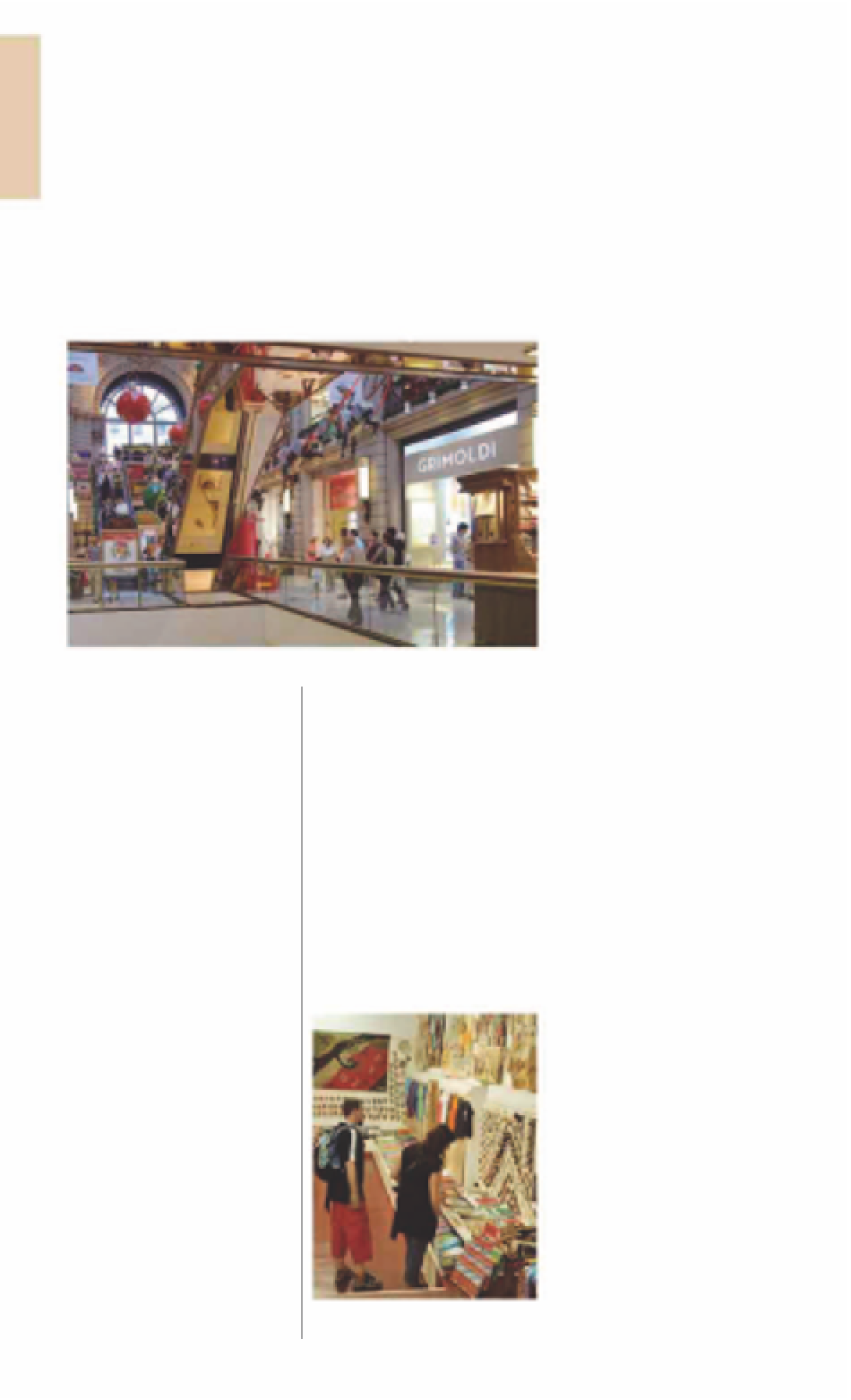Travel Reference
In-Depth Information
SHOPPING IN ARGENTINA
Shopping is tremendous fun in Argentina
and reason enough in itself to visit the
country. Foreign visitors will find that
prices for locally produced goods, including
luxury buys such as leather items and
jewelry, are very reasonable. Added to this
is a great variety of shopping centers: in
the major cities there are swanky, modern
malls, department stores, and exclusive
high-fashion boutiques that stock
imported goods and brand names. In the
country's interior, several small towns are
renowned for their colorful and atmospheric
artisans' markets that usually take place
over the weekends. They sell locally made
products that include crafted gaucho
paraphernalia and high-quality weavings
and ceramics.
Bargaining
Bargaining is much less
common in Argentina than
in other Latin American coun-
tries. Try the question
Cuanto
vale?
(How much is it worth?)
in place of the usual
Cuanto
cuesta?
(What is the price?)
Only at crafts' markets and
antiques shops do vendors
sometimes start at a higher
price than the one they accept.
Visitors may feel confident
enough to make a lower offer
here, particularly when
purchasing a combination
of items.
The glittering interiors of Galerías Pacíico, Buenos Aires
(see p95)
Opening Hours
In cities, malls usually open
from 10am to 10pm daily. Food
courts and cinemas within malls
stay open later. Street shops
usually open from 9am to 8pm
on weekdays; some close at
1pm on Saturdays, and remain
shut on Sundays. In the small
towns of Argentina, store
owners usually close for a
siesta between 1 and 4:30pm.
Visitors are able to reclaim
IVA on their purchase when
buying products made in
Argentina worth AR$70 or more
from shops displaying a
Global
Refund
logo. Ask for a
factura
(receipt) and a Global Refund
cheque when making a
purchase. These should be
stamped at customs prior
to departure; you will then
be sent to a
puesto de pago
for the refund. These desks
are located at several
Argentinian airports.
Shopping Malls and
Boutiques
Shopping malls, ranging
from modest buildings to
plush, air-conditioned
establishments, are ubiquitous
in Argentinian towns and
cities. Some, such as the
Galerías Pacífico
(see p95)
mall
in Buenos Aires and
El Palacio
in Salta, are housed in lovely,
old landmark buildings. Many
of these malls have multiplex
cinemas, food courts, and also
play areas for kids. High-end
international brands of clothing,
perfume, and jewelry can be
found in boutiques on the
main avenues in big cities.
In Buenos Aires, the trendy
neighborhood of Palermo
Viejo is known for its chic
boutiques run by independent
Argentinian designers.
Some designer names such
as
Ricky Sarkany
,
Prune
,
and
Bensimon
have shops
in Buenos Aires and branches
across the other major cities
of Argentina.
How to Pay
Cash is universally accepted,
preferably the Argentinian peso.
Many places also accept US
dollars. Credit cards are widely
accepted in cities, unlike small
towns in Argentina's interior.
Preferred cards are MasterCard
and Visa, and to a lesser extent
American Express.
Taxes and Refunds
Argentina's local sales tax is
called
Impuesto al Valor Agregado
(IVA). The current rate is 21 per-
cent and is included in the
advertised price for goods.
Handicrafts shop in Quilmes, Tucumán
(see p193)

































